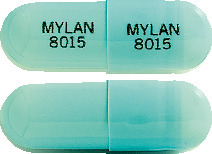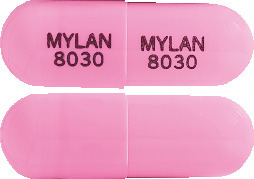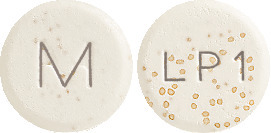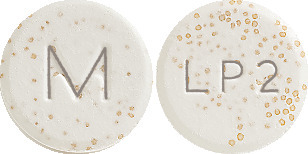What is in this leaflet
This leaflet answers some common questions about ZOPRAL and ZOPRAL ODT. It does not contain all the available information. It does not take the place of talking to your doctor or pharmacist.
All medicines have risks and benefits. Your doctor has weighed the risks of you taking ZOPRAL or ZOPRAL ODT against the benefits they expect it will have for you.
If you have any concerns about taking this medicine, ask your doctor or pharmacist.
Keep this leaflet with the medicine. You may need to read it again.
What ZOPRAL and ZOPRAL ODT is used for
Peptic Ulcers
ZOPRAL and ZOPRAL ODT are used to treat peptic ulcers in adults. Depending on the position of the ulcer, it is called either a gastric or duodenal ulcer. A gastric ulcer occurs in the stomach. A duodenal ulcer occurs in the duodenum, which is the tube leading out of the stomach.
Too much acid being made in the stomach can cause these ulcers.
ZOPRAL and ZOPRAL ODT are also used to help stop duodenal ulcers from coming back.
Reflux Oesophagitis
ZOPRAL and ZOPRAL ODT are used to treat the symptoms of reflux oesophagitis or reflux disease in adults and in children from 6 to 17 years of age.
This can be caused by backflow (reflux) of food and acid from the stomach into the food pipe or gullet, also known as the oesophagus.
Reflux can cause a burning sensation in the chest rising up to the throat, also known as heartburn.
Heartburn and Stomach Pain Associated with Reflux or Peptic Ulcer
ZOPRAL and ZOPRAL ODT are used for the short-term treatment of heartburn and peptic ulcer symptoms in adults.
Peptic Ulcers Associated with Helicobacter Pylori Infection
Most people who have a peptic ulcer also have bacteria called Helicobacter pylori in their stomach. ZOPRAL and ZOPRAL ODT can be taken in conjunction with certain antibiotics to help eradicate Helicobacter pylori and let your peptic ulcer heal. However, it is possible that the antibiotics may not always get rid of Helicobacter pylori.
How ZOPRAL and ZOPRAL ODT works
ZOPRAL and ZOPRAL ODT contains lansoprazole, which is a type of medicine called a proton pump inhibitor (PPI). It works by decreasing the amount of acid the stomach makes, to give relief from the symptoms of excessive acid and allow healing to take place. This does not stop food being digested in the normal way.
Ask your doctor if you have any questions about why this medicine has been prescribed for you. Your doctor may have prescribed it for another reason.
There is no evidence that ZOPRAL and ZOPRAL ODT are habit-forming.
This medicine is available only with a doctor's prescription.
Before you take ZOPRAL or ZOPRAL ODT
When you must not take it
Do not take ZOPRAL or ZOPRAL ODT if you have an allergy to:
- any medicine containing lansoprazole
- any of the ingredients listed at the end of this leaflet
- any medicines containing a proton-pump inhibitor
Some of the symptoms of an allergic reaction may include:
- shortness of breath
- wheezing or difficulty breathing
- swelling of the face, lips, tongue or other parts of the body
- rash, itching or hives on the skin
Do not take ZOPRAL or ZOPRAL ODT if you have severe liver disease.
Do not take ZOPRAL or ZOPRAL ODT if you are already taking the medicine atazanavir. Atazanavir is used to treat HIV infection. If it is taken at the same time as ZOPRAL or ZOPRAL ODT, it won't be absorbed properly and will be less effective in treating HIV infection.
Do not take this medicine after the expiry date printed on the pack or if the packaging is torn or shows signs of tampering. If it has expired or is damaged, return it to your pharmacist for disposal.
If you are not sure whether you should start taking this medicine, talk to your doctor.
Before you start to take it
Tell your doctor if you have allergies to any other medicines, foods, preservatives or dyes.
Tell your doctor if you have or have had any of the following medical conditions:
- liver or kidney problems
- inflammation of the bowel
- a tumour in the stomach region
Tell your doctor if you have problems with digestion, or have an intolerance to:
- fructose
- glucose
- galactose
- lactose
- sucrose
Tell your doctor if you are pregnant or plan to become pregnant or are breastfeeding. Your doctor can discuss with you the risks and benefits of taking ZOPRAL or ZOPRAL ODT during pregnancy.
Taking ZOPRAL or ZOPRAL ODT during breastfeeding should be avoided as it is not known if this medicine passes into your break milk.
If you have not told your doctor about any of the above, tell them before you start taking ZOPRAL or ZOPRAL ODT.
Taking other medicines
Tell your doctor or pharmacist if you are taking any other medicines, including any that you get without a prescription from a pharmacy, supermarket or health food shop.
Some medicines and ZOPRAL or ZOPRAL ODT may interfere with each other. These include:
- theophylline, used to treat asthma
- oral contraceptives
- warfarin, used to prevent blood clots
- carbamazepine and phenytoin, used to treat seizures
- ketoconazole, used to treat fungal infections
- digoxin, used to treat heart complaints
- sucralfate (used to treat gastric ulcers) and antacids (used to treat heartburn and indigestion)
ZOPRAL and ZOPRAL ODT should be taken at least one hour before taking sucralfate or an antacid.
- iron preparations
- ampicillin esters, used in some antibiotics
- tacrolimus, used in transplant patients to reduce organ rejection
- atazanavir or other medicines used to treat HIV infection
- methotrexate used to treat some cancers
These medicines may be affected by ZOPRAL or ZOPRAL ODT or may affect how well it works. You may need different amounts of your medicines, or you may need to take different medicines.
Your doctor and pharmacist have more information on medicines to be careful with or avoid while taking this medicine.
How to take ZOPRAL or ZOPRAL ODT
Follow all directions given to you by your doctor and pharmacist carefully. They may differ from the information contained in this leaflet.
If you do not understand the instructions on the box, ask your doctor or pharmacist for help.
When to take it
Take ZOPRAL or ZOPRAL ODT in the morning before food. This medicine works best when taken on an empty stomach.
How much to take
Take one tablet each day, unless your doctor has told you otherwise.
Adults
The dose is usually 30 mg a day. The dose may vary from 15 mg to 30 mg a day depending on your condition.
Children (6 years or older)
For children between 6 to 11 years, the recommended dose depends on the weight of the child.
For children weighing 30 kg or less, the usual dose is 15 mg daily.
For children weighing over 30 kg, the usual dose is one 30 mg tablet daily.
For children between 12 to 17 years, the dose may vary from 15 mg to 30 mg a day depending on the condition.
How to take it
ZOPRAL (capsules)
Swallow the capsules whole with a glass of water.
Do not crush or chew the capsules. If the granules in the capsules are crushed or chewed they will not work properly.
If you have difficulty swallowing the capsules whole, empty the capsule contents onto some food or drink as follows:
The capsules may be emptied onto a small amount of either apple sauce, strained pears, cottage cheese or yoghurt. Alternatively, the capsules may be emptied into a small amount of apple, orange or tomato juice.
- open the capsule
- do not crush the granules
- sprinkle the granules onto one tablespoon of apple sauce, strained pears, cottage cheese or yoghurt or into a small amount of apple, orange or tomato juice
- swallow immediately. If drinking, rinse the glass two or three times with more juice and swallow immediately each time
Do not take ZOPRAL with any other food or drink.
ZOPRAL ODT (tablets)
Swallow the tablet whole with a glass of water, or gently suck the tablet, then swallow the granules with your saliva. If the tablet is chewed or crushed, it will not work properly.
How long to take it
Continue taking your medicine for as long as your doctor tells you.
In most patients, ZOPRAL or ZOPRAL ODT relieves symptoms rapidly and healing is usually complete within 4 weeks. In some patients a further 4 weeks of treatment may be needed for complete healing.
In some cases, your doctor may decide that long-term treatment is needed.
Tell your doctor if any of your symptoms return after stopping long-term treatment.
ZOPRAL and ZOPRAL ODT are recommended only for short-term use (8 to 12 weeks) in children.
For children aged 6-11 years, do not exceed 12 weeks of treatment with ZOPRAL or ZOPRAL ODT.
For children aged 12-17 years, do not exceed 8 weeks of treatment with ZOPRAL or ZOPRAL ODT.
Tell your doctor if your symptoms return. You may need further treatment.
If you forget to take it
If it is almost time for the next dose, skip the dose you missed and take the next dose when you are meant to.
Otherwise, take it as soon as you remember, and then go back to taking your medicine as you would normally.
Do not take a double dose to make up for the dose you missed. This may increase the chance of you getting an unwanted side effect.
If you are not sure what to do, ask your doctor or pharmacist.
If you have trouble remembering when to take your medicine, ask your pharmacist for some hints.
If you take too much (overdose)
Immediately telephone your doctor or the Poisons Information Centre (telephone 13 11 26) for advice, or go to Accident and Emergency at the nearest hospital, if you think that you or anyone else may have taken too much ZOPRAL or ZOPRAL ODT. Do this even if there are no signs of discomfort or poisoning.
While you are taking ZOPRAL or ZOPRAL ODT
Things you must do
Take ZOPRAL or ZOPRAL ODT exactly as your doctor has prescribed.
If you are about to be started on any new medicine, remind your doctor and pharmacist that you are taking ZOPRAL or ZOPRAL ODT.
Tell any other doctors, dentists and pharmacists who treat you that you are taking this medicine.
If you become pregnant while taking this medicine, tell your doctor immediately.
Things you must not do
Do not take ZOPRAL or ZOPRAL ODT to treat any other complaints unless your doctor tells you to.
Do not give your medicine to anyone else, even if they have the same condition as you.
Do not stop taking your medicine or change the dosage without checking with your doctor. If you stop taking it suddenly, your condition may worsen or you may have unwanted side effects.
Things to be careful of
Be careful driving or operating machinery until you know how ZOPRAL or ZOPRAL ODT affects you. This medicine generally does not cause any problems with your ability to drive a car or operate machinery. However, as with many other medicines, ZOPRAL or ZOPRAL ODT may cause dizziness in some people.
Make sure you know how you react to ZOPRAL or ZOPRAL ODT before you drive a car, operate machinery, or do anything else that could be dangerous if you are dizzy. If you drink alcohol, the dizziness may be worse.
Things that may help your condition
Some self-help measures suggested below may help your condition. Talk to your doctor or pharmacist about these measures and for more information.
- alcohol
Your doctor may advise you to limit your alcohol intake. - aspirin and many other medicines used to treat arthritis, period pain or headaches
These medicines may irritate the stomach and may make your condition worse. Your doctor or pharmacist may suggest other medicines you can take. - caffeine
Your doctor may advise you to limit the number of drinks that contain caffeine, such as coffee, tea, cocoa and cola drinks because they contain ingredients that may irritate the stomach. - eating habits
Eat smaller, more frequent meals. Eat slowly and chew your food carefully. Try not to rush at meal times. Eat your meals well before bedtime. - smoking
Your doctor may advise you to stop smoking or at least cut down. - weight
Your doctor may suggest losing some weight to help your condition.
Side effects
Tell your doctor or pharmacist as soon as possible if you do not feel well while you are taking ZOPRAL or ZOPRAL ODT.
All medicines can have side effects. Sometimes they are serious, most of the time they are not. You may need medical attention if you get some of the side effects.
Do not be alarmed by the following list of side effects. You may not experience any of them.
Ask your doctor or pharmacist to answer any questions you may have.
Tell your doctor or pharmacist if you notice any of the following and they worry you:
- Stomach or bowel problems such as:
- diarrhoea or constipation
- stomach pain
- indigestion
- vomiting or nausea
- flatulence or wind
If you suffer from severe persistent diarrhoea and/or vomiting when taking ZOPRAL or ZOPRAL ODT, tell your doctor.
As natural acid in the stomach helps to kill bacteria, the lowering of this stomach acid by acid-reducing medicines such as ZOPRAL and ZOPRAL ODT may cause some people to get certain stomach infections.
Tell your doctor or pharmacist if you have difficulty in thinking or working because of the following:
- headache
- dizziness
- tiredness
- generally feeling unwell
- joint or muscle aches or pains
- feeling confused, depressed or having hallucinations
Tell your doctor or pharmacist if you experience changes to your appearance such as:
- skin rashes
- hives or itchy skin
- hair thinning
- breast enlargement and impotence in men with long term use
Tell your doctor or pharmacist if you experience any signs of infection such as:
- coughs, colds, sore throats or sinuses indicating an upper respiratory tract infection
- frequent and painful passing of urine indicating a urinary tract infection
- dry or sore mouth/throat
Tell your doctor or pharmacist if you experience changes in your sight, hearing, taste or touch such as:
- tingling or numbness of hands and feet
- blurred vision
- increased sensitivity to sunlight
- taste disturbances
If any of the following happen, tell your doctor immediately or go to Accident and Emergency at your nearest hospital:
- red, itchy blistering spots, especially if it appears in areas of the skin that are exposed to the sun and is accompanied by joint pain.
- watery and severe diarrhoea
- swelling of the face, lips, tongue or throat, which may cause difficulty breathing
- yellowing of the skin or eyes, especially if accompanied by fever, fatigue, loss of appetite, dark coloured urine or light coloured bowel movements
- pain in the kidney region
- swelling of the hands, ankles or feet
- bruising or bleeding more easily than normal, bleeding under the skin or red or purple flat pinhead spots under the skin
- severe blisters and bleeding in the lips, eyes, mouth, nose or genitals (Stevens-Johnson syndrome)
- sudden or severe hives or itchy skin which may be accompanied by fever
- frequent infections such as fever, severe chills, sore throat or mouth ulcers
- cramping of the muscles in your hands or feet
- irregular heartbeat
- fits or seizures
The above list includes serious to very serious side effects. You may need urgent medical attention or hospitalisation. These side effects are rare.
Your doctors may want to take some blood tests from time to time to check your progress.
Tell your doctor or pharmacist if you notice anything that is making you feel unwell, when taking, or soon after finishing taking ZOPRAL or ZOPRAL ODT.
Other side effects not listed above may occur in some patients.
Other problems are more likely to arise from the ulcer itself rather than the treatment.
For this reason, tell your doctor immediately if you notice any of the following:
- pain or indigestion occurring during treatment with ZOPRAL or ZOPRAL ODT
- vomiting blood or food
- passing of black (blood-stained) bowel motions
After taking ZOPRAL or ZOPRAL ODT
Storage
Keep your medicine in the pack until it is time to take them. If you take the capsules or tablets out of the pack they may not keep well.
Keep your medicine it in a cool dry place where the temperature stays below 25°C.
Do not store ZOPRAL or ZOPRAL ODT or any other medicine in the bathroom or near a sink. Do not leave it on a window sill or in the car. Heat and dampness can destroy some medicines.
Keep it where young children cannot reach it. A locked cupboard at least one-and-a-half metres above the ground is a good place to store medicines.
Disposal
If your doctor tells you to stop taking this medicine or the expiry date has passed, ask your pharmacist what to do with any medicine that is left over.
Product description
What it looks like
ZOPRAL 15 mg
White to off-white coloured pellets filled in a hard gelatin capsule with green opaque cap and green opaque body imprinted with 'MYLAN' over '8015' on both cap and body with black ink.
Available in blister packs of 28 capsules.
ZOPRAL 30 mg
White to off-white coloured pellets filled in a hard gelatin capsule with pink opaque cap and pink opaque body imprinted with 'MYLAN' over '8030' on both cap and body with black ink.
Available in blister packs of 28 capsules.
ZOPRAL ODT 15 mg
White to yellowish white round, flat-faced beveled edged tablet engraved with "LP1" on one side and "M" on other side with orange to dark brown speckles.
Available in blister packs of 28 tablets.
ZOPRAL ODT 30 mg
White to yellowish white round, flat-faced beveled edged tablet engraved with "LP2" on one side and "M" on other side with orange to dark brown speckles.
Available in blister packs of 28 tablets.
Ingredients
ZOPRAL
ZOPRAL contains 15 mg or 30 mg of lansoprazole as the active ingredient.
The capsules also contain the following inactive ingredients:
- Sugar spheres
- magnesium carbonate hydrate
- sucrose
- maize starch
- hyprolose
- methacrylic acid copolymer
- purified talc
- macrogol 6000
- titanium dioxide
- polysorbate 80
- colloidal anhydrous silica
- Empty Hard Gelatin Capsule Size 2 Green Op/Green Op G2HCSA00735 [15 mg capsule only] (ARTG PI No.: 107737)
- Empty Hard Gelatin Capsule Size 0 Pink Op/Pink Op G0HCSA01082 [30 mg capsule only] (ARTG PI No.: 107738)
- Tek Print SW-9009 Black Ink (ARTG PI No.: 2343)
ZOPRAL also contains phenylalanine, sugars and sulfites.
ZOPRAL ODT
ZOPRAL ODT contains 15 mg or 30 mg of lansoprazole as the active ingredient.
The tablets also contain the following inactive ingredients:
- magnesium carbonate hydrate
- sugar spheres (sucrose & maize starch)
- crospovidone
- hyprolose
- methacrylic acid - ethyl acrylate copolymer (1:1)
- triethyl citrate
- sodium hydroxide
- purified talc
- polysorbate 80
- macrogol 6000
- iron oxide red
- iron oxide yellow
- mannitol
- microcrystalline cellulose
- sodium starch glycollate type A
- aspartame
- sodium lauryl sulphate
- sodium bicarbonate
- citric acid monohydrate
- magnesium stearate
- Strawberry 052311 AP0551(flavour) (ARTG PI No.: 105990).
ZOPRAL ODT also contains sulfites and aspartame.
Supplier
ZOPRAL and ZOPRAL ODT are supplied in Australia by:
Alphapharm Pty Ltd trading as Viatris
Level 1, 30 The Bond
30 - 34 Hickson Road
Millers Point NSW 2000
www.viatris.com.au
Phone: 1800 274 276
This leaflet was prepared inApril 2023.
ZOPRAL 15 mg capsules: AUST R 166764
ZOPRAL 30 mg capsules: AUST R 166765
ZOPRAL ODT 15 mg orally disintegrating tablet: AUST R 187430
ZOPRAL ODT 30 mg orally disintegrating tablet: AUST R 187431
ZOPRAL® is a Viatris company trade mark
zopral & zopral ODT_cmi\Apr23/00
Published by MIMS June 2023







 Treatment with lansoprazole also demonstrated significant reduction in frequency and severity of GORD symptoms (p < 0.001).
Treatment with lansoprazole also demonstrated significant reduction in frequency and severity of GORD symptoms (p < 0.001).
 The maintenance studies discussed, using lansoprazole 15 mg and 30 mg, did not extend beyond 12 months.
The maintenance studies discussed, using lansoprazole 15 mg and 30 mg, did not extend beyond 12 months. There was also a significant difference in the usage of "rescue" antacid treatment in the two groups, with 67% of the lansoprazole group taking antacids in the first two weeks of treatment compared with 83% of the ranitidine group (p = 0.001).
There was also a significant difference in the usage of "rescue" antacid treatment in the two groups, with 67% of the lansoprazole group taking antacids in the first two weeks of treatment compared with 83% of the ranitidine group (p = 0.001).
 Chemical name: 2[[[3-methyl-4-(2,2,2-trifluoroethoxy)- 2-pyridyl]methyl]sulphinyl]-1H-benzimidazole.
Chemical name: 2[[[3-methyl-4-(2,2,2-trifluoroethoxy)- 2-pyridyl]methyl]sulphinyl]-1H-benzimidazole.